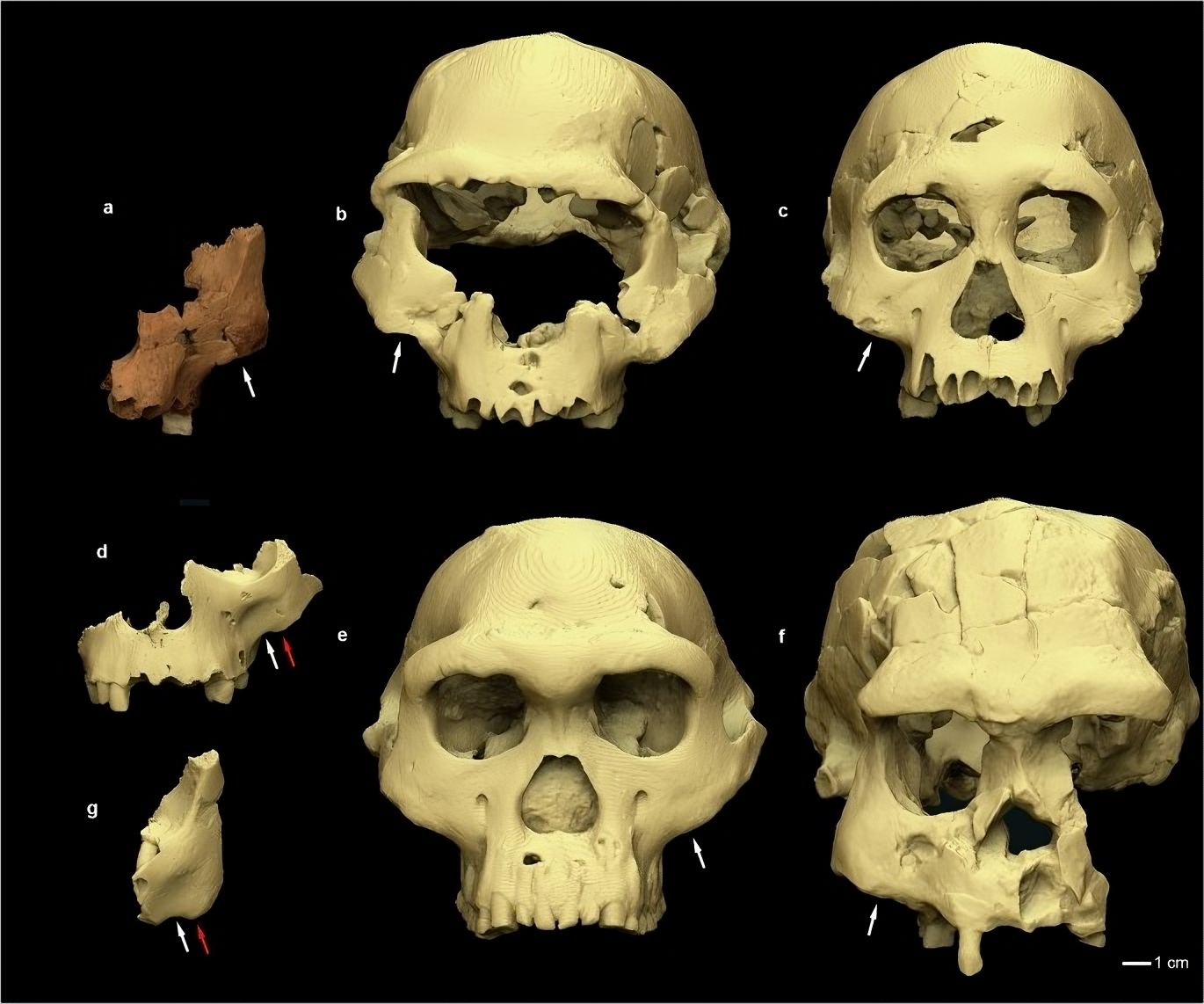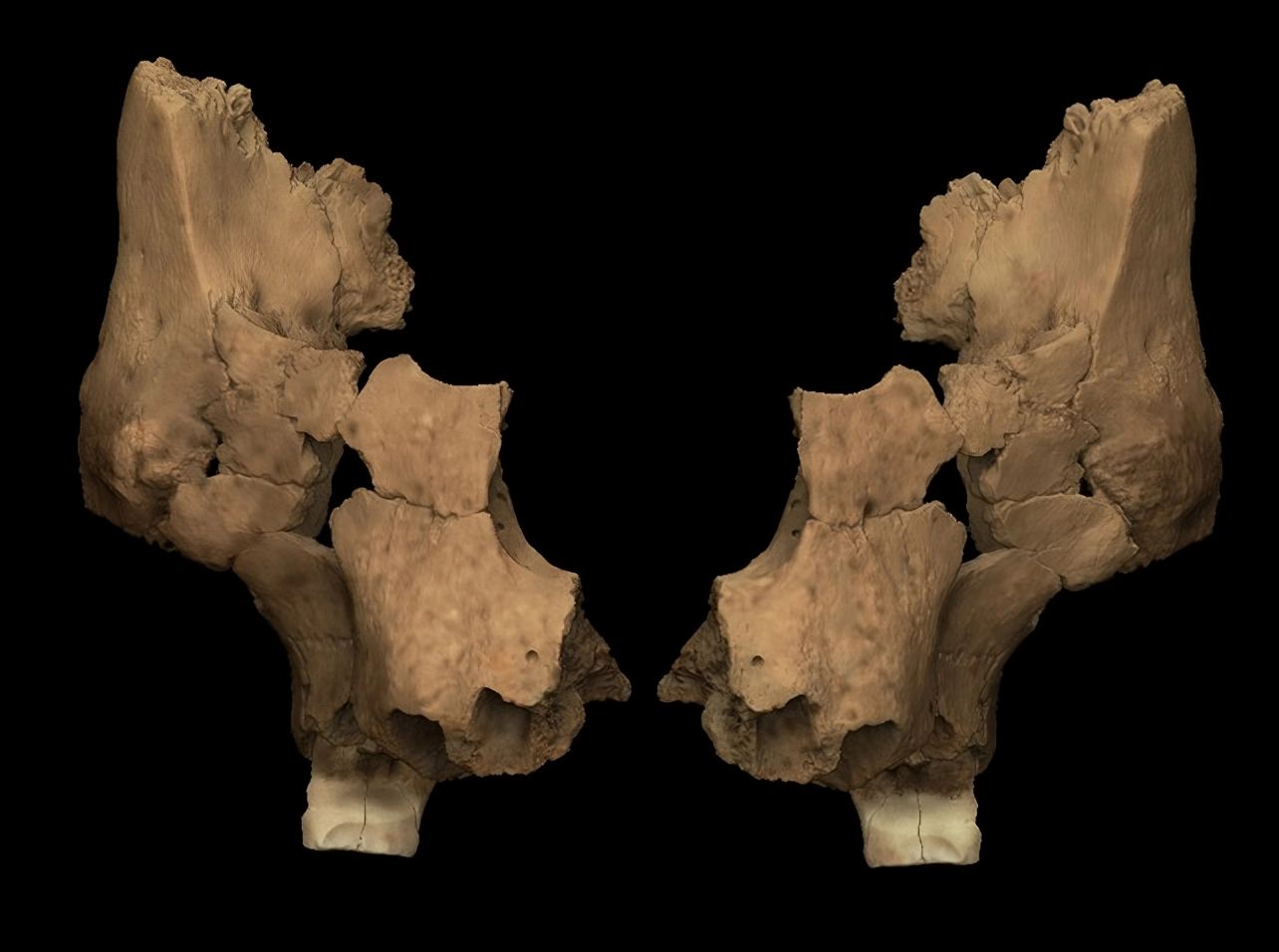Follow us on Google News (click on ☆)

Comparison of the zygomaxillary border and the zygomaxillary tubercle.
This discovery, published in Nature, opens a new chapter in the history of hominids. Pink, whose partially reconstructed face shows primitive features, could be a direct ancestor of the human populations that inhabited Europe long before the arrival of Homo antecessor, a species already identified at the same site.
An archaeological site with unsuspected treasures
The Atapuerca mountains in Spain are a true sanctuary for paleoanthropologists. For decades, this site has yielded fossils and tools that trace the history of early humans in Europe. The Sima del Elefante cave, in particular, has revealed bones dating back more than a million years.
In 2022, an international team uncovered fragments of a maxilla and cheekbone belonging to an adult individual. These bones, dated between 1.1 and 1.4 million years old, are the oldest human remains discovered in Western Europe. Their analysis allowed for the partial reconstruction of Pink's face, revealing unexpected characteristics.
The stone tools and animal bones found at the site suggest that these hominids mastered hunting and butchering techniques. These clues testify to a successful adaptation to an environment rich in natural resources.
A face that questions our origins
Pink's face, with its robust and prominent features, differs from that of Homo antecessor, a more recent species found nearby. This morphology is more reminiscent of Homo erectus, a human ancestor that left Africa around 1.8 million years ago.

Frontal view of the virtual reconstruction of the hominid's midface.
However, Pink does not exactly match known Homo erectus fossils. Researchers have therefore classified it as Homo affinis erectus, a designation that highlights its similarities while leaving the door open for future discoveries. This caution reflects the many questions that remain about the identity and evolution of these early Europeans.
The extreme climatic conditions 1.1 million years ago could explain the disappearance of this population. A hypothesis reinforced by the rarity of fossils from this period in Western Europe.
To go further: How are such ancient fossils dated?
Dating fossils relies on several scientific methods, adapted to the age and context of the discoveries. For fossils as old as Pink's, researchers primarily use relative and absolute dating techniques. Relative dating involves analyzing the sedimentary layers in which the fossils are buried. By studying stratigraphy, scientists can determine the chronological order of geological events.
Absolute dating, on the other hand, provides a precise age in years. Among the most common methods are radioactive isotope dating, such as potassium-argon or argon-argon, which measure the decay of elements in volcanic rocks surrounding the fossils. For Pink, researchers also used biostratigraphy, a method that relies on the study of associated animal fossils to estimate the age of sedimentary layers.
Finally, modern techniques like optically stimulated luminescence (OSL) allow dating sediments by measuring the energy accumulated in minerals over time. These methods, combined with the analysis of tools and animal bones found at the site, provide a precise view of the environment and chronology related to these discoveries.